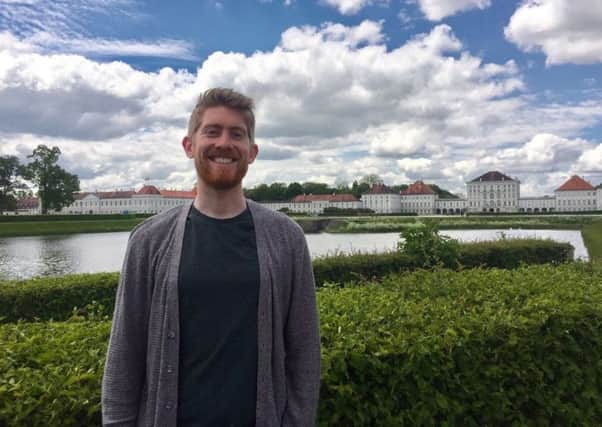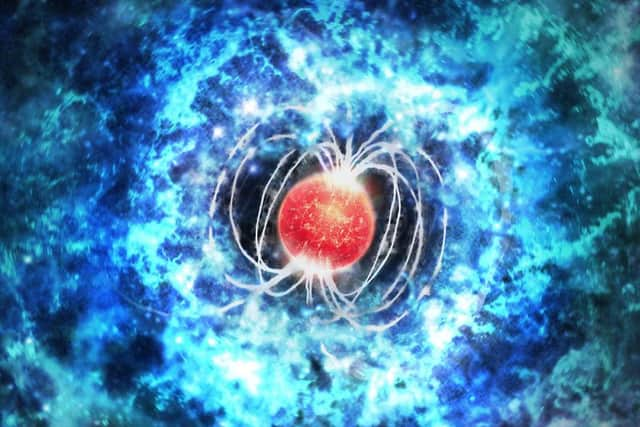'˜Star' man Matt spies closest '˜super' supernova to Derry ever recorded!


Foyle College old boy, Matt Nicholl, and his team at the Harvard-Smithsonian Centre for Astrophysics (CfA) in Boston, threw a spanner in the works of the existing scientific consensus on the hypernova - or ‘superluminous supernova’ - phenomenon, with their incredible discovery in May.
By spying ‘SN 2017egm’ through the European Space Agency’s Gaia satellite on May 23, 2017, the Derry man and his team of whizz astronomers discovered hypernovae could occur both nearer to Earth than previously thought, and that they could also occur in spiral galaxies like our very own Milky Way.
No-one had really been sure if that was possible before.


Advertisement
Hide AdAdvertisement
Hide AdNow a new paper written by Matt and published in the The Astrophysical Journal Letters explains how ‘SN 2017egm’ is located in a spiral galaxy about 420 million light years from Earth, making it about three times closer than any other superluminous supernova previously seen.
It also describes how ‘SN 2017egm’s’ host galaxy has a high concentration of elements heavier than hydrogen and helium, which astronomers call ‘metals’.
As Matt points out, the dwarf galaxies that usually host superluminous supernovas are known to have a low metal content, which was thought to be an essential ingredient for making these explosions.
This is the first clear evidence for a metal-rich birthplace for a superluminous supernova.


Advertisement
Hide AdAdvertisement
Hide Ad“Superluminous supernovas were already the rock stars of the supernova world,” said Matt, a postdoctoral scientist at CfA.
“We now know that some of them like heavy metal, so to speak, and explode in galaxies like our own Milky Way.”
In the past decade, astronomers have discovered about fifty supernovas, out of the thousands known, that are particularly powerful.
These explosions are up to 100 times brighter than other supernovas caused by the collapse of a massive star.
Advertisement
Hide AdAdvertisement
Hide AdMatt’s colleague Edo Berger said: “If one of these went off in our own Galaxy, it would be much brighter than any supernova in recorded human history and would be as bright as the full moon.
“However, they’re so rare that we probably have to wait several million years to see one.”
The Eglinton native’s stellar discovery follows a long-standing interest in what he calls the ‘dynamic sky’ - or - ‘transient and explosive phenomena that evolve on human timescales, including the core-collapse supernovae that mark the deaths of massive stars’.
Matt completed his PhD at Queen’s University, Belfast under the supervision of Stephen Smartt, but says his interest in astronomy dates back to his days at Oxford, where he studied physics.
Advertisement
Hide AdAdvertisement
Hide AdHe’s always been interested in superluminous supernovae, which emit as much light as the entire Milky Way does in a year. Now he’s managed to signficantly advance our understanding of the massive heavenly bodies.
The CfA researchers’ new study supports the idea that a rapidly spinning, highly magnetized neutron star, called a magnetar, is likely the engine that drives the incredible amount of light generated by these supernovas. Significantly, Matt’s results show that the amount of metals has, at most, only a small effect on the properties of a superluminous supernova and the engine driving it. However, the metal-rich variety occurs at only about 10 per cent of the rate of the metal-poor ones.
Unfortunately, ‘SN 2017egm’ won’t be observable again until the middle of September because it is too close to the Sun.
But after that, detailed studies should be possible for at least a few more years.
Advertisement
Hide AdAdvertisement
Hide Ad“This should break all records for how long a superluminous supernova can be followed”, said co-author Raffaella Margutti of Northwestern University in Evanston, Illinois.
“I’m excited to see what other surprises this object has in store for us.”
The paper was authored by Matt Nicholl, Edo Berger, Raffaella Margutti, Peter K. Blanchard, James Guillochon, Joel Leja and Ryan Chornock.